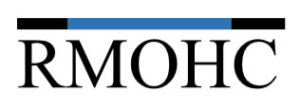
Audience:
This is the fifth of a series of training posts and videos presenting accounting in simple-to-understand English for Small Businesses and Small Government Contractors.
The goal of RMOHC is to provide client empowerment and financial peace of mind through complete, compliant, and accurate accounting.
This fifth post shows a sample Balance Sheet. Here is the basic structure of the financial statement with no accounts showing. Each account group will be presented individually culminating with a completed financial statement illustrating sample accounts
The statement can appear in two ways: Assets above Liabilities+Equity or Assets on the left side and Liabilities+Equity on the right hand side.

Assets
CURRENT ASSETS – These are assets that will get used up within one year
Cash – Bank: Checking Account, the most active account!
Cash – Savings: Savings Account, savings to be used up in one year
Accounts Receivable: The amount that you customers owe you (and you have invoiced them)
Prepaid Expense – Insurance: A year’s policy that was paid in one payment
LONG-TERM ASSETS – These are assets that will last longer than one year
Land: Investment in land that will take more than 1 year to pay off
Building: Investment in building(s) that will take more than 1 year to pay off
Computers: Equipment that will be of use for more than one year
Depreciation: A tax concept that long-term assets will last only a certain number of years. This needs more explanation in a later post!

Liabilities
CURRENT LIABILITIES – These are DEBTS that will get paid off within one year
Accounts Payable: What you owe your vendors this year (you will have it paid off shortly!)
Loans Payable: What you owe to banks and other lenders that you will pay off within one year
Deferred Revenue: Money a client paid you have not earned yet for services in the future, like a one year subscription.
Accrued Expense: Money you paid a vendor for services/products in the future, like a one year subscription.
LONG-TERM LIABILITIES – These are DEBTS that will last longer than one year to pay off
Mortgage: Loan to buy real estate that will take more than 1 year to pay off
Long-Term Loans: Debt from financial institutions that will take more than 1 year to pay off
EIDL Payable: Government Loan from the COVID period to help businesses survive

Equity
FIRST – Small Businesses do not sell stock. OWNERS contribute and draw funds, they do not buy or sell stock or any type
Owner’s Accounts: A generic account to record how much an owner contributes or takes from the business
Owner’s Contributions: A specific Owner Equity account showing how much an owner invested/paid in into the business
Owner’s Draws: A specific Owner Equity account showing how much an owner has take out/withdrawn from the business
NOTE: Any personal payment or deposit made to a business by the owner gets recorded in Equity
Retained Earnings: What the business has earned during the year and this comes from the Income Statement. It is the result of: Total Income Less Total Expenses during the year.

Sample Balance Sheet:
Here is the Balance Sheet completed. You will see that total of ASSETS = LIABILITIES + EQUITY

Remember:
The Balance Sheet combines what you own (Assets), what you owe (Liabilities), and what you actually own in the company (Equity) in one financial statement (report): The Balance Sheet. There is a lot of valuable information that you, the owner, as well as outside parties such as banks, vendors, and others, can learn from this report.
Basic Balance Sheet Formula:
Assets = Liabilities + Owner’s (Partners’) Equity
What your company is worth Formula:
Assets – Liabilities = Owner’s (Partners’) Equity (= What your company is worth)
Thank you for reading this post, watch for video series that will be coming out very soon.
If this was helpful, please share this with your friends and colleagues.
Here’s to your peace of mind!!
-Michael




